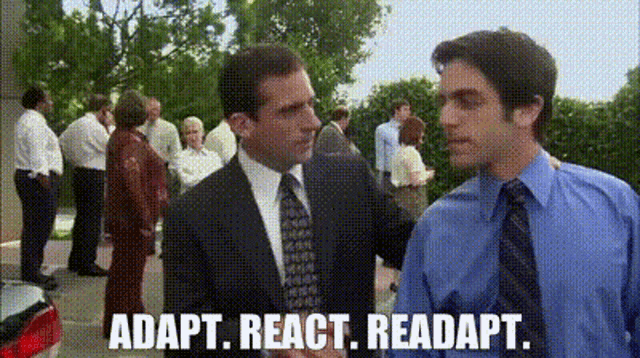Does this exchange of communication sound familiar?
“Why didn’t you do this?”
“I wasn’t told this was my responsibility.”
“But that’s why I asked what your bandwidth was.”
Ask anyone in the workforce if they’ve dealt with unclear workplace communication, assumptions, or nebulous requests, and you’d be hard-pressed to find zero hands; no one is immune.
Direct communication (among other approaches) can solve this problem, but if simply calling for it were enough, workplaces wouldn’t encounter these situations so often.
So, let’s dig into how to become a better communicator at work.
What is Direct Communication?

Direct communication at work takes place both verbally and online. In essence, it means that every message has a clear directive without much room for discussion or interpretation. There are no hidden messages or pretenses. It’s not always the way we should communicate, but when used appropriately, it can help get more done faster and more effectively.
Indirect communication, by contrast, relies on body language, gesturing, or platitudes to deliver your message. While it is a legitimate form of communication, in the context of the workplace, it’s best not to rely on it for directives and instructions, as it leaves your co-communicator with too much to interpret and intuit—which might not get you the end product you want as a manager or team lead.
If you’re unsure which of these two forms of communication you more often default to, consider these three ways of identifying if you’re a “direct” communicator.
(And if none sound like you, consider applying them to your communications in order to become more direct.)
1. Succinct

Direct communicators require fewer words to express what they need and feel. They focus on the message’s clarity rather than its interpretation. On the other hand, indirect communication is usually subtle and designed to avoid conflict while forsaking directness.
Indirect communicators will say something like this to a team member who turned in an assignment late:
“Hey, I totally understand that things take more time, but I waited a long time for this project, and I didn’t want to bug you. When things get really late, people panic, and then it makes us wonder if you remembered that this was your task to do—not accusing you of that at all, but it does make it hard when all of us have to play project manager and ping you. Please let us know well in advance so we can plan and not scramble at the last minute. Again, I know this might be a one-off thing, but just for the future.”
Whereas, you might say:
“Thanks for turning this in! Next time, if you’re experiencing delays with deliverables, let us know at least 12 hours in advance so we can plan accordingly.”
This last message has little room for interpretation. There are no unnecessary storylines, random subtexts, or beating around the bush. This isn’t to say that the subtext of these actions, like turning in an assignment late, is unimportant; it’s simply not needed if the behavior isn’t a pattern yet.
Keep it brief.
2. You Take on Conflict Like A Pro

Conflict resolution is where direct communication shines.
Direct communicators have no problem kindly telling things like they are. If your team member is late to an important meeting, don’t use displeased expressions to express disapproval. You stick to the facts.
Again, let’s use the most straightforward example:
“You were twenty minutes late to the QBR meeting. Please be on time next time.”
People can have personal feelings about it, but that communication has done its job efficiently.
You might ask: Doesn’t a facial expression convey that same piece of information without any words?
This might be true. But do you want to set a precedent for passive aggression or facial expressions as your company’s communication mode?
Passive aggression serves only to sow negativity in the workplace. Directness presents everything on the table and doesn’t rely on the recipient to pick up on clues and find the meaning between the lines.
It also gives employees a sense of security that they will always know where they stand. This is far better for workplace culture in the long term.
3. You’re Able and Willing to Adapt

Sometimes, direct communication requires redirecting indirect communication.
If you’re working with people who rely heavily on indirect communication, you can still speak on their level while maintaining directness to avoid misinterpretation.
Let’s say you want to delegate a project task to someone with a deadline of two days. When you tell them, they give you a slightly concerned expression while reluctantly saying, “Yes, I can do that.”
Use your directness here:
“You look a little concerned. Is that deadline feasible? If not, just let me know so I can give this to someone with more bandwidth.”
Conclusion: Effective Communication Takes Effort
On the surface, this advice may seem simple. But it takes practice.
We are inherently social creatures who have and still rely heavily on body language for subtle cues. Being direct is a learned behavior that we’ve adapted to the workplace for peak efficiency—with enough practice, you can learn to adapt to it, too.
Do you know who the experts are in multiple communication styles? Boon coaches.
Let us know if you want a more hands-on approach to learning how to communicate more effectively or to help your team do this.

